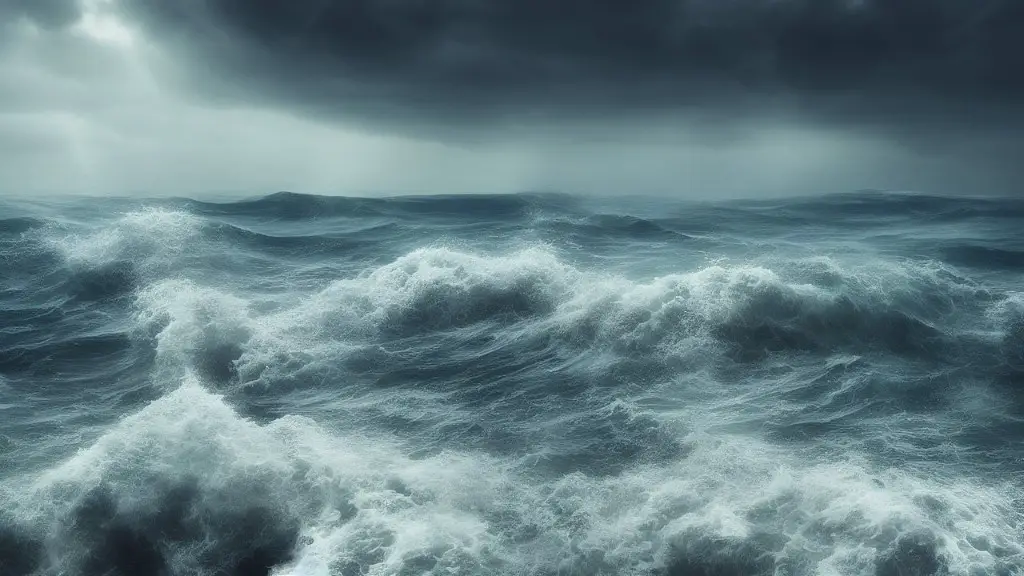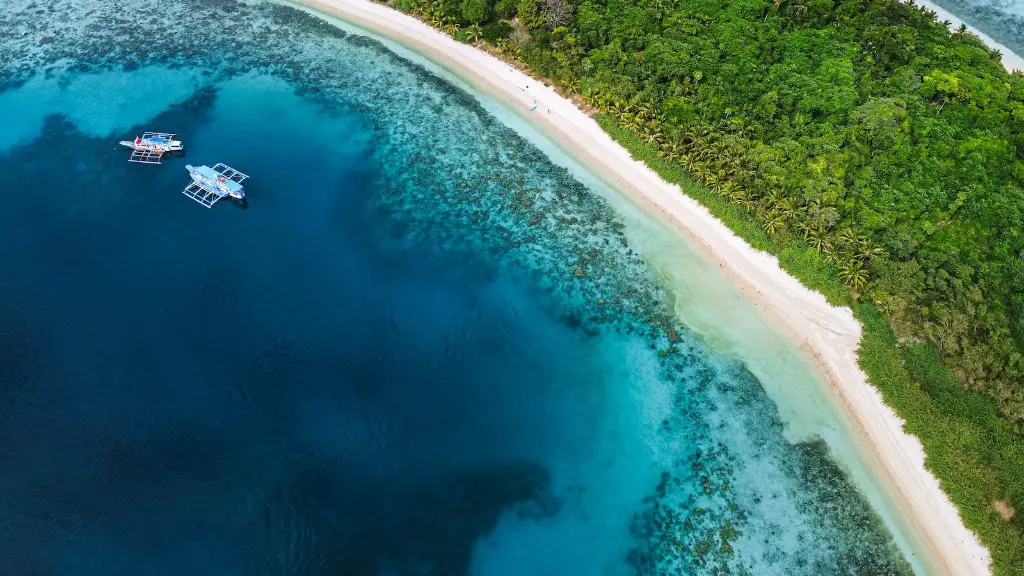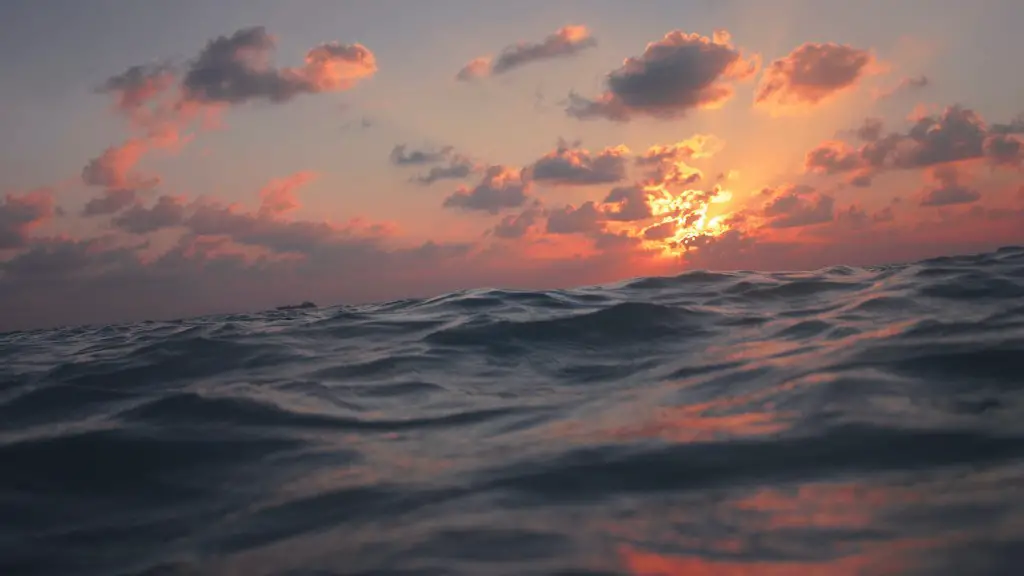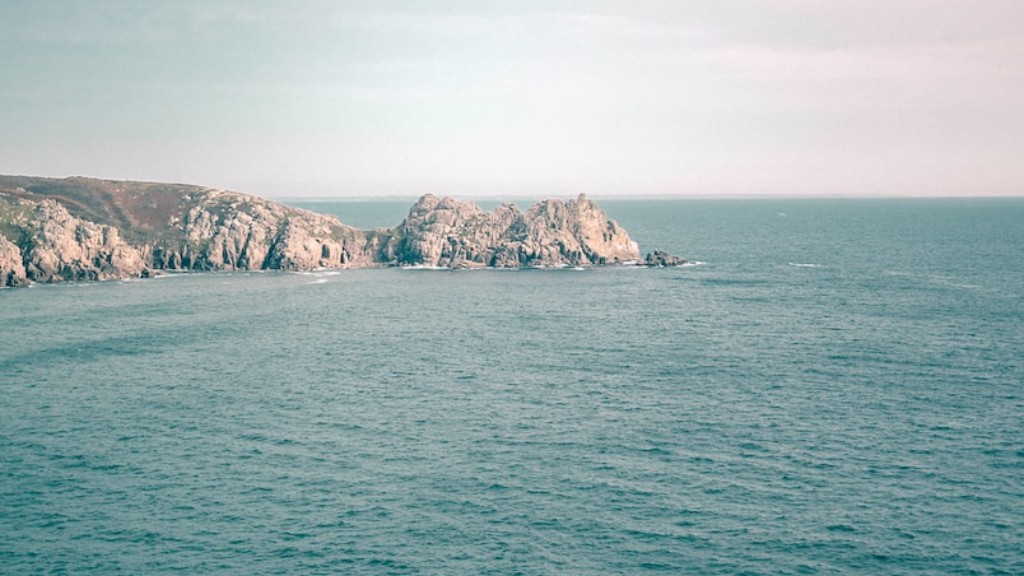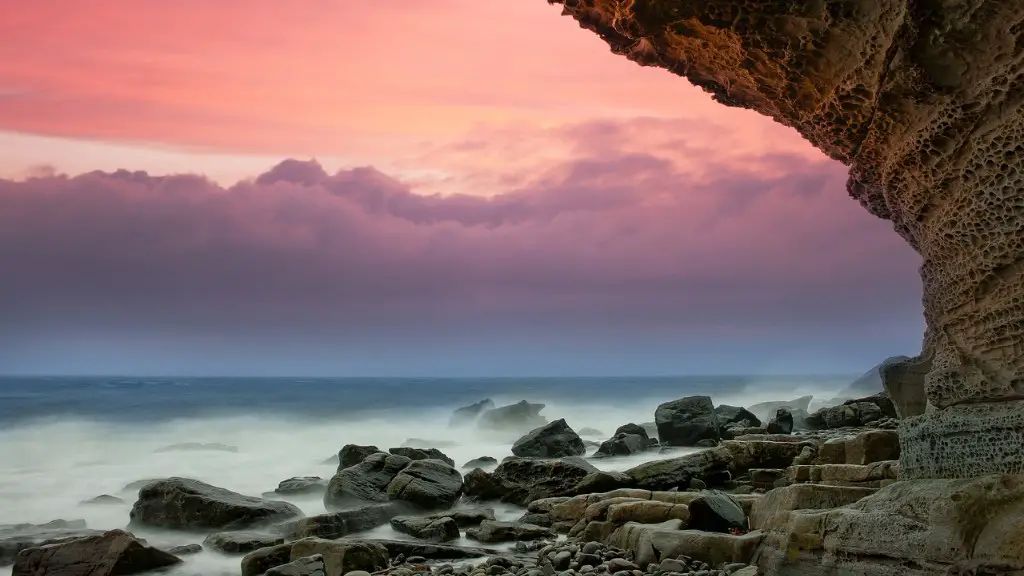The Caribbean Sea is located in the western part of the Atlantic Ocean. It lies to the east of Central America and is bordered by the Caribbean Islands, including Jamaica, Cuba and Hispaniola. It is an important part of the tropical climate of the region, which makes it a popular destination for tourists. The waters of the Caribbean Sea are warm and contain a great diversity of marine life, which makes it an important region for fisheries and offshore oil drilling. In addition, the Caribbean Sea serves as a major navigable route for ocean-going vessels, offering access to important ports located throughout the region.
The Caribbean Sea contributes significantly to the regional level of precipitation, and it is a major source of groundwater recharge in the tropical climate of Central America. It also serves as a buffer zone between the Atlantic Ocean and the Gulf of Mexico, allowing migrating species to move freely between the two ocean bodies. The Caribbean Sea provides habitats for a variety of both aquatic and terrestrial life, and its coral reefs are of particular importance. These reefs are important nursery grounds for many species of fish, as well as providing shelter for endangered sea turtles and marine mammals.
The Caribbean Sea is a very ecologically diverse region, with an abundance of islands, many of which are uninhabited. This combined with the tropical climate offers a wide range of habitats for a variety of species, making it an ideal location for ecotourism. The Caribbean Sea has a long history of human habitation, and many cultures have called the area home over the course of its long history. The region has been a major hub for trade and travel for centuries, and has played an important role in the development of the cultures of Central America and the Caribbean.
A major threat to the Caribbean Sea is pollution. Heavy development along the coastline and in the shallower regions of the sea have resulted in an increase in pollutants entering the water. Also, the overfishing of certain species has led to a decrease in biodiversity, as well as impacting the health of coral reefs. Additionally, the rapid expansion of coastal cities has led to much of the native vegetation and wildlife being lost. If action is not taken to protect the Caribbean Sea, these threats could have a serious and long-term impact on the health of the ecosystem.
The Caribbean Sea can be found on the map by looking for Central America and the northernmost tip of South America. The Caribbean Sea is bordered by the Caribbean Islands, including Jamaica, Cuba and Hispaniola. It is also located south of the Gulf of Mexico and east of the Atlantic Ocean. Mapmakers have marked the Caribbean Sea with a distinctive blue or green color to differentiate it from the surrounding waters.
Climate of The Caribbean Sea
The Caribbean Sea has an incredibly diverse and vibrant climate that is affected by both ocean and atmospheric conditions. The climate of the Caribbean Sea is characterized by warm temperatures, limited rainfall, and frequent tropical weather systems. In some cases, the Caribbean Sea can experience extreme weather events such as hurricanes and tropical storms. The Caribbean Sea is also known for its high levels of humidity, with some parts reaching up to 90 percent during the rainy season, which runs from May to November.
The unique combination of land, sea and air temperatures has led to the presence of different plant species and the increased presence of animal species in the Caribbean Sea region. This means that there is an abundance of vegetation that provides refuge to wildlife, and the conditions also allow for a wide range of different aquatic creatures to thrive. Additionally, this climate supports the vast coral reef systems that are found throughout the Caribbean region.
The climate of the Caribbean Sea provides a major boost to tourism in the region, as visitors from all over the world come here to enjoy the warm temperatures and diverse cultures. Because of this, the region has become a major hub for business and leisure, making it an important economic driver for many of the countries in the Caribbean.
Industrial Activities In The Caribbean Sea
The Caribbean Sea has become an important hub for a variety of industrial activities, including fishing, shipping, and oil extraction. Historically, the fishing industry was the primary activity in the Caribbean, but in the past decade, the region has witnessed a rapid expansion in its offshore oil and gas production. This activity has been met with criticism from environmentalists due to the potential risks it poses to the aquatic ecosystems. Additionally, there has been a growing presence of commercial shipping vessels as the region has become increasingly connected to global trade.
The extraction of oil and gas in the Caribbean Sea also raises serious environmental concerns about its impact on the local ecology. It is known to contribute to the pollution of coral reefs and to the depletion of fish stocks. There has also been an increase in the risk of oil spills and the release of hazardous materials into the sea, which can lead to the destruction of habitats and the endangerment of species.
Despite these potential issues, the industrial activities that take place in the Caribbean Sea have undoubtedly played a key role in the region’s economic development in recent years. The population has witnessed an increase in employment opportunities and an overall improvement in living standards, and the wealth generated from these activities has helped to fund the development of infrastructure and other public services.
Economic Impact of The Caribbean Sea
The Caribbean Sea is an extremely important region in terms of global economics, as it provides vital access to international markets for countries located in the region. Its strategic location coupled with its tropical climate and stunning landscapes makes it an attractive destination for tourists, businesses and investors. Tourist visits totaled approximately 25 million in 2019, representing a financial boost for countries in the Caribbean region.
The economic impact of the Caribbean Sea is also felt through the numerous large-scale maritime industries that operate in the region. The shipping industry, for example, makes an instrumental contribution to the development of many countries in the region, by providing a range of services to facilitate the movement of goods throughout the Caribbean Sea. Additionally, the presence of oil and gas reserves throughout the region provides a crucial source of revenue for governments, which is often used to fund the improvement of public services, such as health and education.
The Caribbean Sea is also a major fishing ground, producing millions of tonnes of fish every single year. This provides employment opportunities, particularly in the coastal communities of the region, and also supports a thriving export market to international buyers. Additionally, the numerous coral reefs found in the Caribbean Sea serve as important sources of marine life, with many species of fish making their home there.
Threats To The Caribbean Sea
Despite its many economic and environmental benefits, the Caribbean Sea region is facing a number of significant threats. Climate change is a major concern in the region, as it is predicted to result in an increase in the frequency and severity of extreme weather events like hurricanes. Additionally, the increasing levels of pollution, both at sea and on land, are having a detrimental effect on the health of the marine ecosystems.
Another major threat facing the region is overfishing, as commercial fishing operations have become increasingly involved in the region. This is having a dramatic impact on the fish stocks, with many once abundant species now having severely reduced populations. Additionally, there is a growing risk of invasive species, with some species of fish, coral, and algae having the potential to wreak havoc on the local ecology.
Finally, the Caribbean Sea is under threat from coastal development, with cities and towns becoming ever-more established along its length. This has led to the destruction of vast swathes of the native vegetation and wildlife, and it is also resulting in increased levels of coastal erosion. In addition, it is also contributing to the growing levels of pollution, which could have a devastating long-term impact on the environment of the Caribbean Sea.
Protection Of The Caribbean Sea
In light of the many threats the Caribbean Sea is facing, the importance of protecting this region is becoming increasingly clear. There are several steps that can be taken to ensure the longevity of the region’s ecology and economy. Countries in the region must work together to enact laws and regulations that protect the ecosystems of the Caribbean Sea and its wildlife.
It is also essential that better strategies are implemented to prevent overfishing and to conserve the many endangered species in the region. Additionally, further measures must be taken to reduce the levels of pollution, both at sea and on land, as this could have a severe negative impact on the region’s health. Finally, more must be done to reduce the impact of coastal development and to protect the native vegetation and wildlife.
The protection of the Caribbean Sea is not only important for preserving the dazzling variety of ecosystems within it, but also for safeguarding the economic benefits that it brings. It is essential that countries in the region work together to protect this valuable and important region for future generations.
Cultural Significance Of The Caribbean Sea
The Caribbean Sea holds a deep historical and cultural significance for many of the countries in the region. As a result of past colonial rule and the mixing of different cultures, the Caribbean Sea and its numerous islands have become platforms for cultural diversity and exploration. The people of the Caribbean Sea have formed a unique culture that combines a variety of traditions and beliefs reflecting the different racial backgrounds of the countries.
The music of the Caribbean Sea has become well-known throughout the world, with genres such as reggae, salsa and Calypso having a major influence on contemporary music. Additionally, art, theatre and dance are popular forms of expression throughout the region, showcasing the creativity of the people. The culture of the Caribbean Sea and its various islands also offer a platform for exploration, with a variety of tourist attractions catering to different interests.
The cultural significance of the Caribbean Sea is not just confined to the people of the region, but to visitors and visitors from around the world. It is an area of immense cultural wealth, which has been shaped over centuries by the diverse population of the region, and it is this unique mixture of cultures and beliefs that makes the Caribbean Sea such a special place.
Conclusion
The Caribbean Sea is a region of incredible natural beauty, boasting a vibrant mix of cultures and a stunning array of flora and fauna. This coupled with its stunning beaches, thriving cities and its hugely important economic activities make it an incredibly important part of the world. Despite the many threats it faces, the Caribbean Sea remains an important resource that is worth protecting for generations to come.
